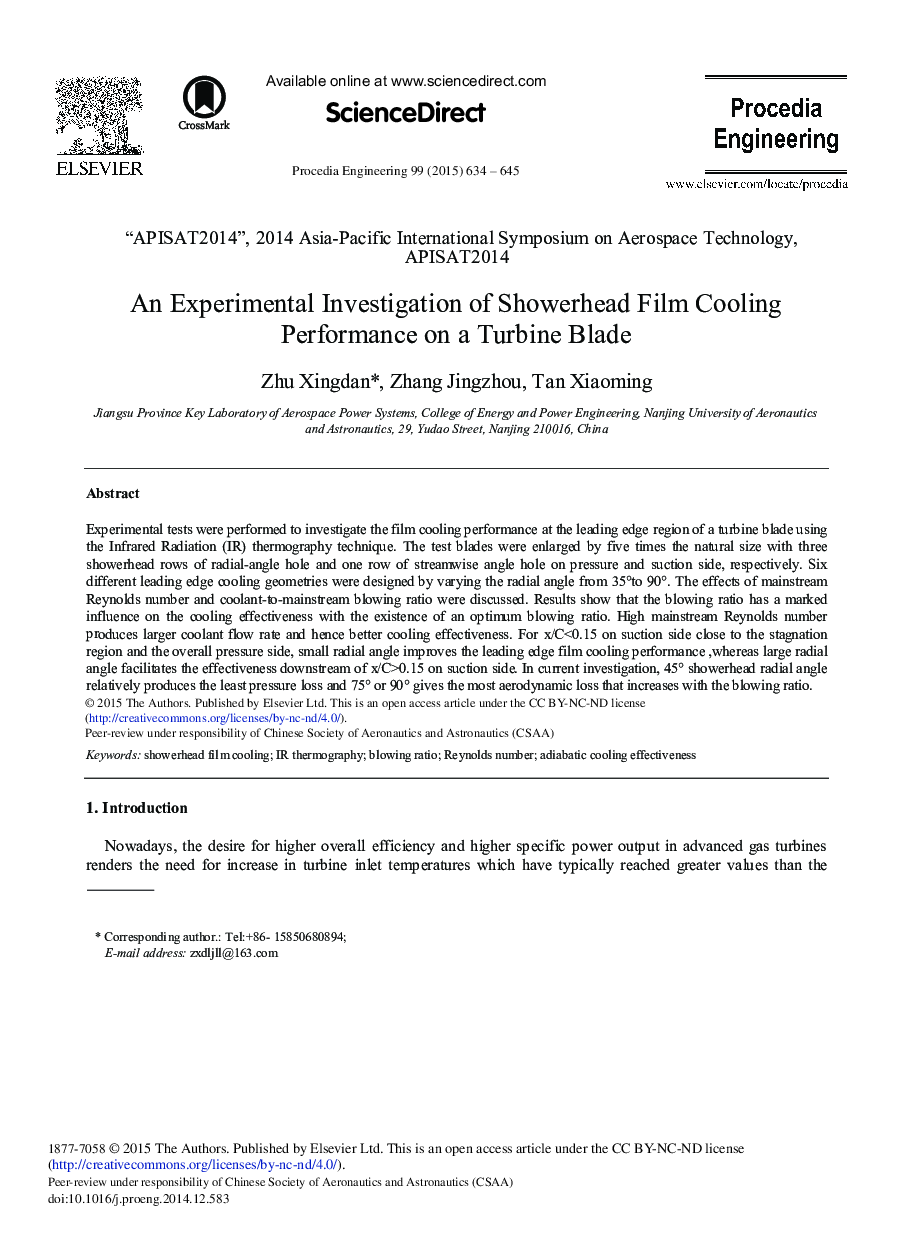| Article ID | Journal | Published Year | Pages | File Type |
|---|---|---|---|---|
| 857118 | Procedia Engineering | 2015 | 12 Pages |
Experimental tests were performed to investigate the film cooling performance at the leading edge region of a turbine blade using the Infrared Radiation (IR) thermography technique. The test blades were enlarged by five times the natural size with three showerhead rows of radial-angle hole and one row of streamwise angle hole on pressure and suction side, respectively. Six different leading edge cooling geometries were designed by varying the radial angle from 35°to 90°. The effects of mainstream Reynolds number and coolant-to-mainstream blowing ratio were discussed. Results show that the blowing ratio has a marked influence on the cooling effectiveness with the existence of an optimum blowing ratio. High mainstream Reynolds number produces larger coolant flow rate and hence better cooling effectiveness. For x/C<0.15 on suction side close to the stagnation region and the overall pressure side, small radial angle improves the leading edge film cooling performance,whereas large radial angle facilitates the effectiveness downstream of x/C>0.15 on suction side. In current investigation, 45° showerhead radial angle relatively produces the least pressure loss and 75° or 90° gives the most aerodynamic loss that increases with the blowing ratio.
